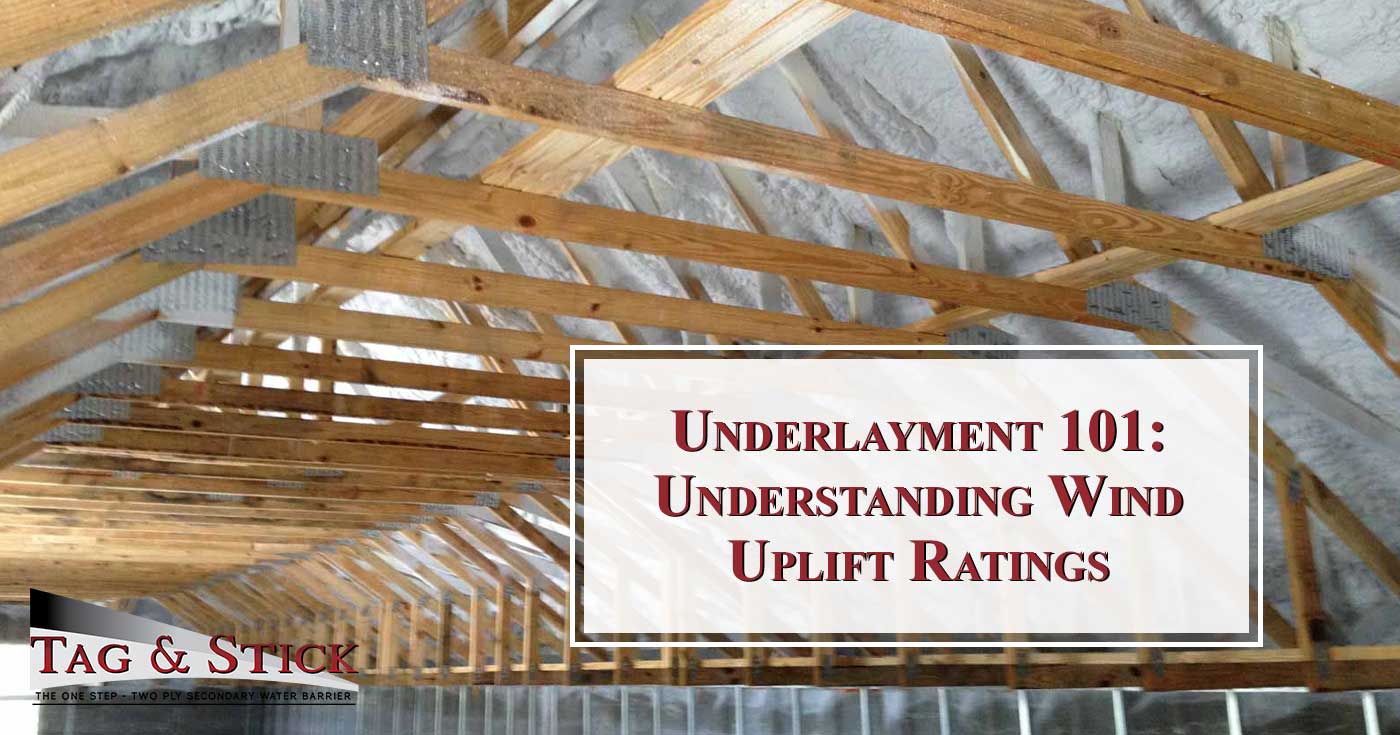Underlayment 101: Understanding Wind Uplift Ratings

- What Is Wind Uplift?
- Wind Uplift Ratings And FM Approvals
- Uplift Ratings Are More Than Just Wind Speed
- Other Factors That Affect Wind Uplift Ratings
- Meeting The Standards From The Ground Up
- Checklist For Early Discussions Between Building Owners And Roofing Contractors
- Underlayment And Wind Uplift Ratings
A roof is meant to protect your client from the elements, not give up the moment the wind blows too hard. To prevent this from happening, rating systems have been developed to guide those, like you, who are in the business of designing and constructing roofs.
What Is Wind Uplift?
As wind flows over a roof surface, it lowers the air pressure directly above the structure, creating an imbalance between the pressure inside and above the building. In the process of equalizing, suction pulls at the roof panels. The faster and stronger the wind, the more uplift force will be present. If the wind is extreme enough, panels and shingles can be loosened, and even pulled off buildings. This uplift pressure is felt differently across different parts of the roof, with the corners and perimeter taking the brunt on the force.
Wind Uplift Ratings And FM Approvals
As a nationally recognized testing laboratory, FM Approvals aim to prevent or reduce property damage. With decades of experience to draw from, they test and certify building materials, fire protection, and electrical equipment to rigid testing criteria. Those materials and equipment that meet FM Approval’s strict testing criteria are classed as FM approved and bear the diamond-shaped ‘FM’ certification mark. FM Approvals work has motivated the development of many types of roofing and fastening systems that we use today.
Uplift Ratings Are More Than Just Wind Speed
Windstorm Classification Rating Misconception: FM Approvals have classification ratings 1 – 60, 1 – 90 or 1 – 120. The misconception is that these numbers correlate to wind speeds of 60, 90, or 120 miles per hour. These ratings actually apply to wind uplift pressure in pounds per square foot and are not directly related to wind speeds. Sometimes a roofing designer will assume that a design wind speed requirement of 90 mph, then the roof system rating will be 1-90. This is not necessarily the case as there are other factors to consider too, most importantly geographic location.
Other Factors That Affect Wind Uplift Ratings
There are several factors that they take into account when calculating wind uplift pressures.
- Categories of buildings, sorted according to the level of risk to human life if the roof failed. These range from low-risk buildings such as agricultural good sheds, to high-risk buildings where many lives are at risk.
- A building’s position in relation to structures close by that would affect the wind’s speed or direction. For example, buildings in a flat, clear area where hurricanes are rare, versus an urban area where structures are built close together.
- Any structures close by that will affect wind and normal air-flow. (Cantilevers, large open structures, parapet walls, roofs with unusual geometric surfaces, adjacent structures, other roof additions for e.g. solar panels.)
- Additionally, mean roof height and the roof pitch will affect the ratings.
Meeting The Standards From The Ground Up
It’s important to note that it’s not enough to use an underlayment that is FM approved if the actual structure it is being applied to doesn’t meet the standard.
Checklist For Early Discussions Between Building Owners And Roofing Contractors
Here are some points to work through early on in your project discussions with your client:
- Find out if the building is insured by FM Global. If it is, check that the roofing system being recommended is correct according to the windstorm classification. Check with the local FM Global office before starting any roof work.
- Check
if the system that is being recommended meets
- local building code requirements
- FM Approvals requirements and
- FM Global data sheet recommendations
- Roofing manufacturers’ warranties are not the same as FM Approvals ratings or building codes.
- Deck
specs to know about the facility:
- type of deck (gauge, depth, rib configuration and yield stress)
- deck span
- deck securement
- Does the building meet FM Approval requirements?
Underlayment And Wind Uplift Ratings
Wind uplift is one of the complicating factors when it comes to roofing system design. Our two-ply, single application, self-adhered underlayment is one of the only underlayments with a mechanically attached base sheet that that meets the strict South Florida wind uplift codes. If you have a roofing challenge, particularly a steep slope roof, contact Tag & Stick, LLC for expert roofing advice.